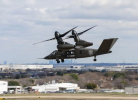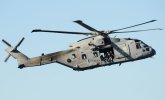My point is that the boxes do have impact but it's probably not so much drag but other dominant factors such as GW, CG, control limits changing, airflow distortion, etc.
If you ask me what's the one thing that the airframes of the future need an excess amount of besides power it's cooling. As the various boxes get more capable that translates into hotter boxes that will need ways to transfer the heat. And things that work at FL370 for a big wing don't work as well for rotorcraft that spend most of their time closer to the surface.
Shack on thermal. ECS becomes an essential avionics system in certain environments. And when it takes 8% or whatever off your max range, you have a pickle…
As the mission changes from “high hot heavy hovering in dusty places” to “long range transits overwater” you bet that every bit of drag and power counts.
Real talk: software is eating HSM. Single best thing Navy could do with FVL is separate mission and safety of flight code (a la P-8) so that we can get upgrades less than 3 years behind schedule.



